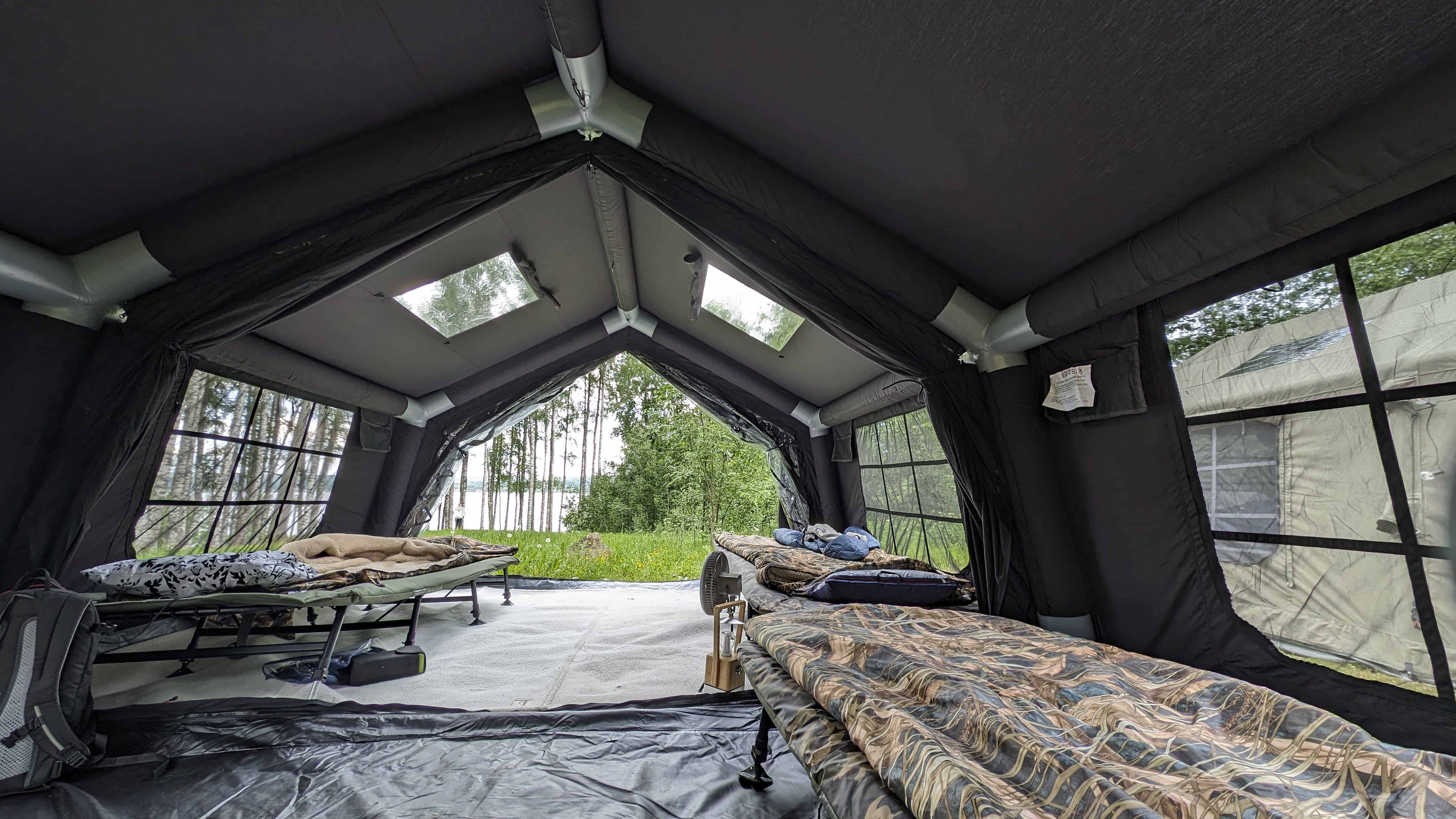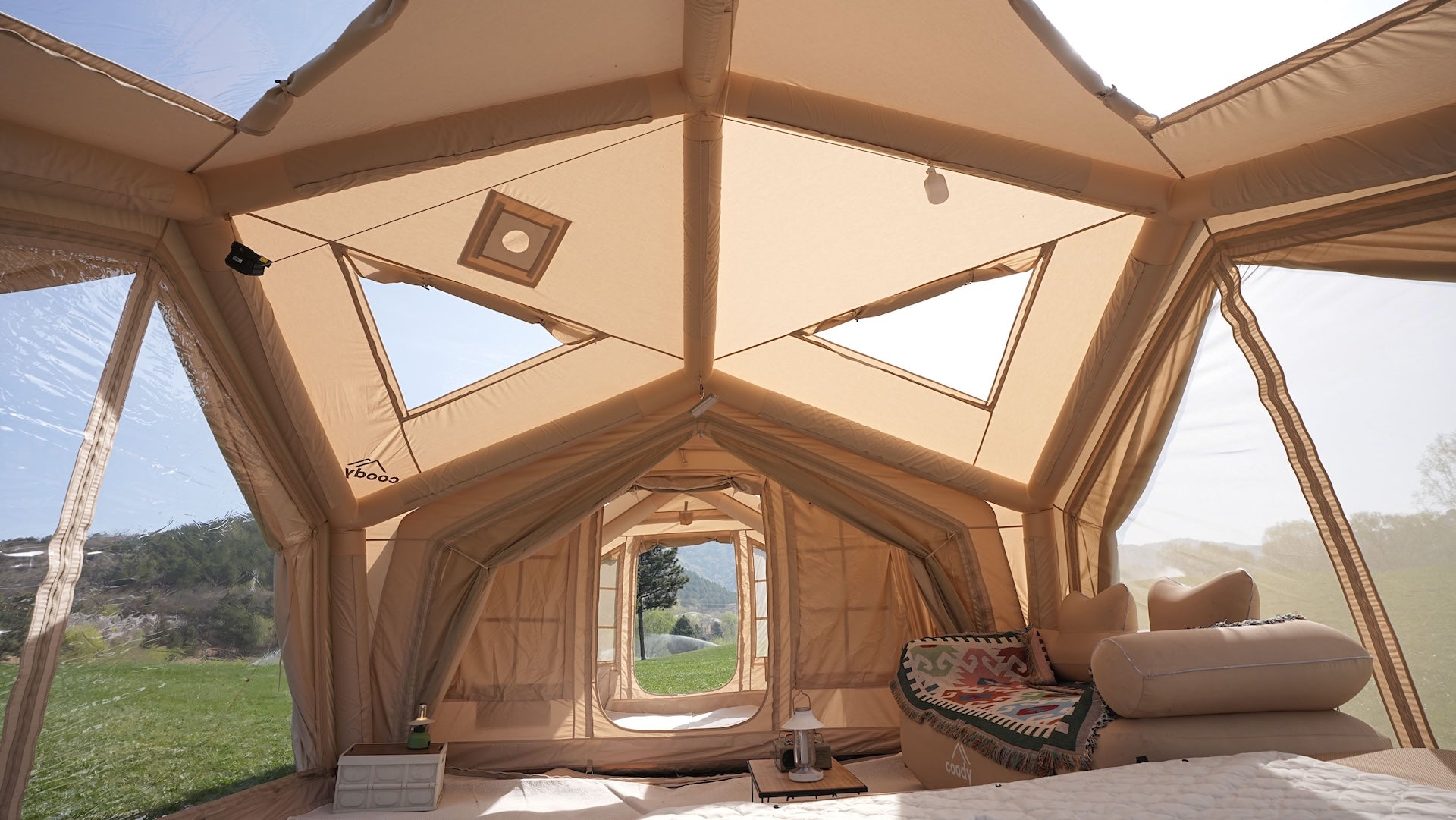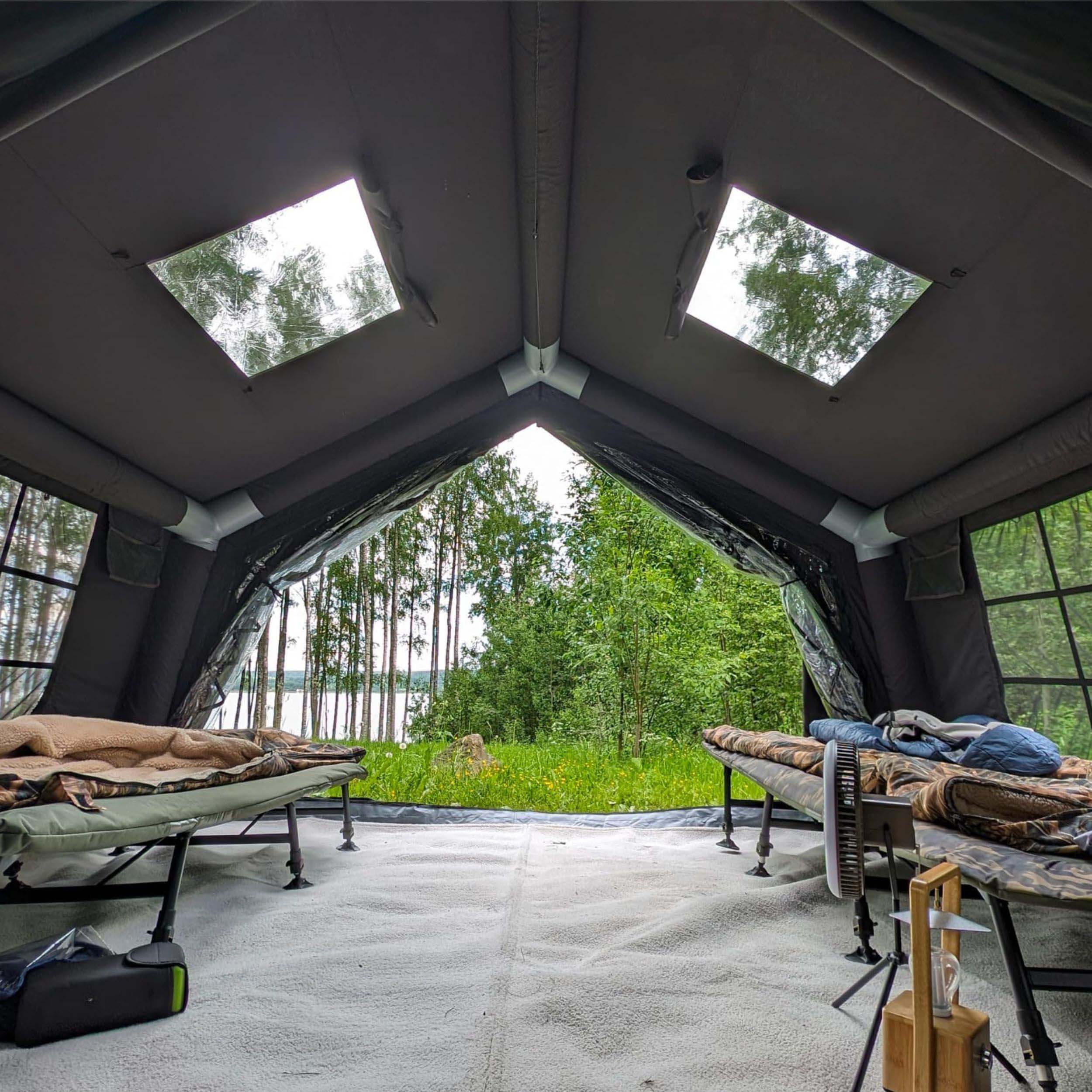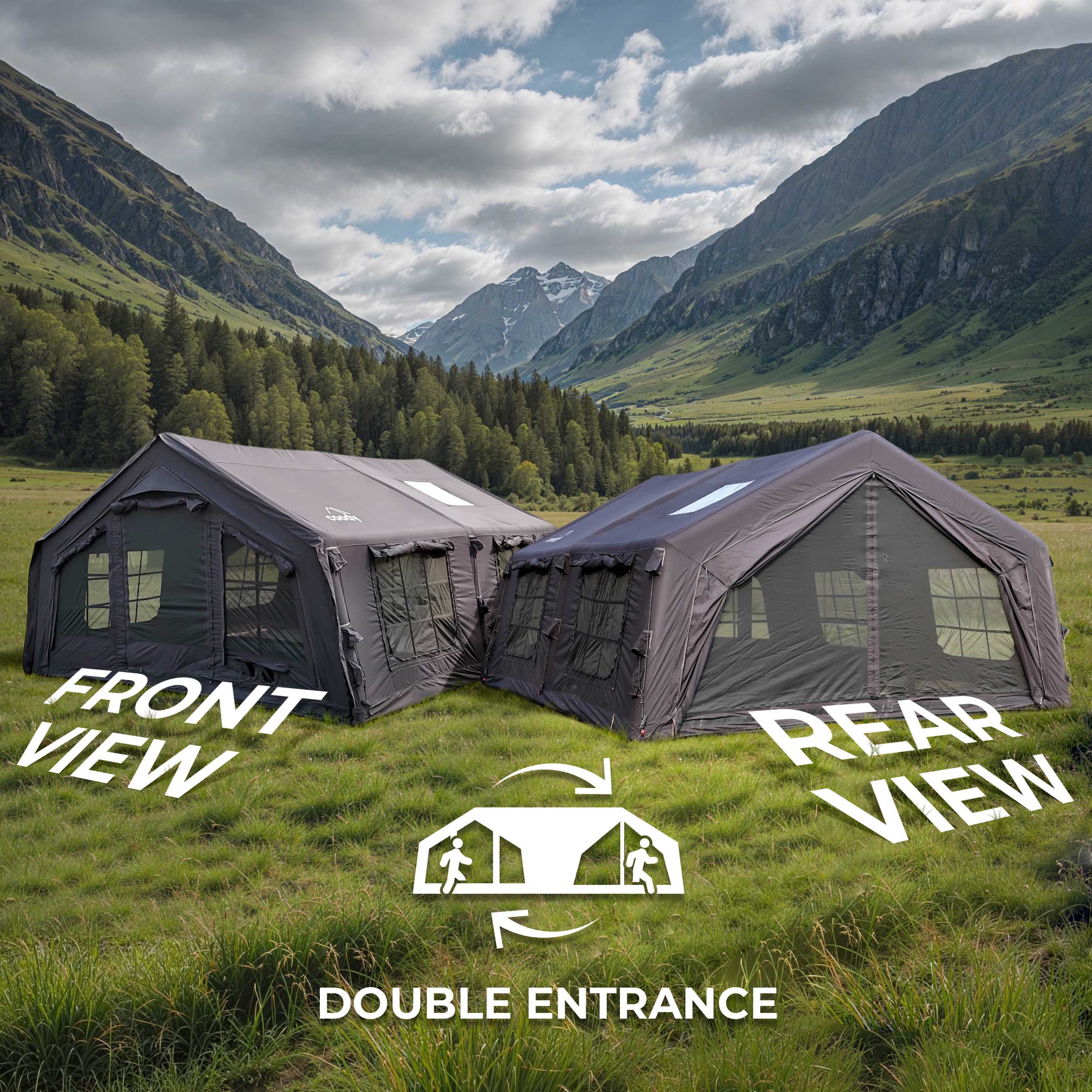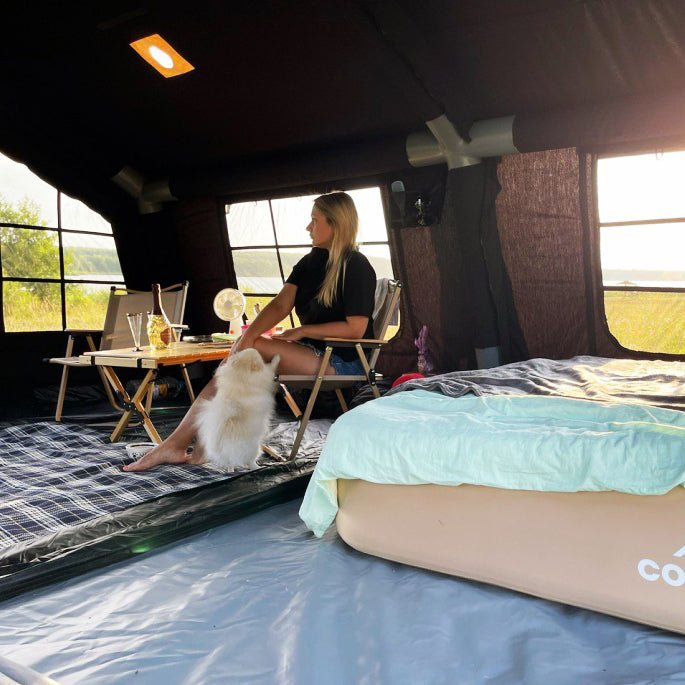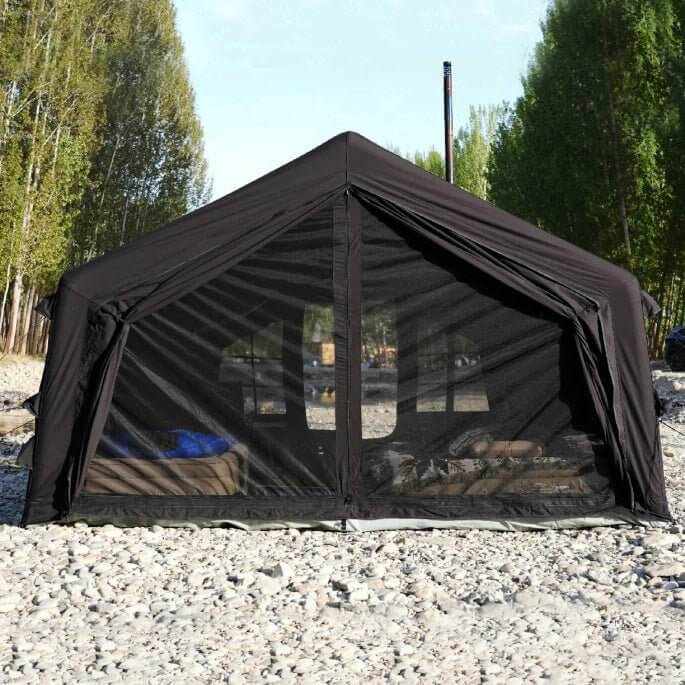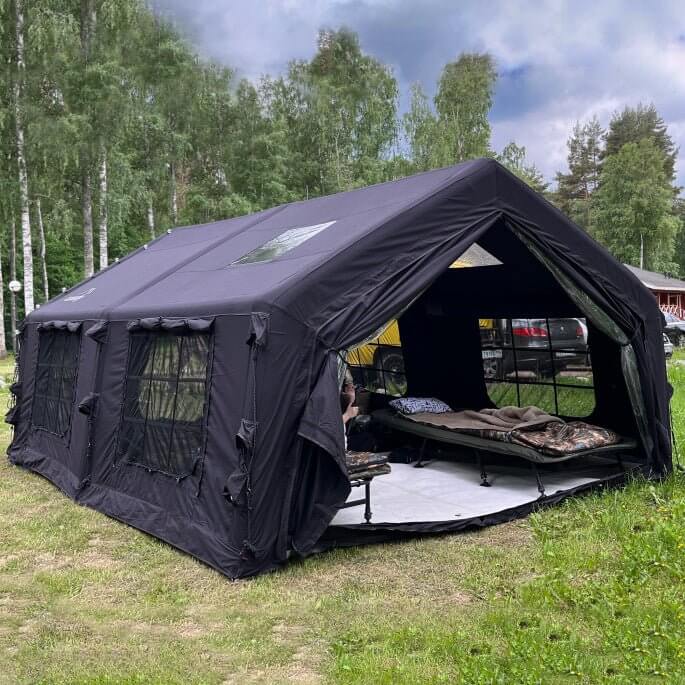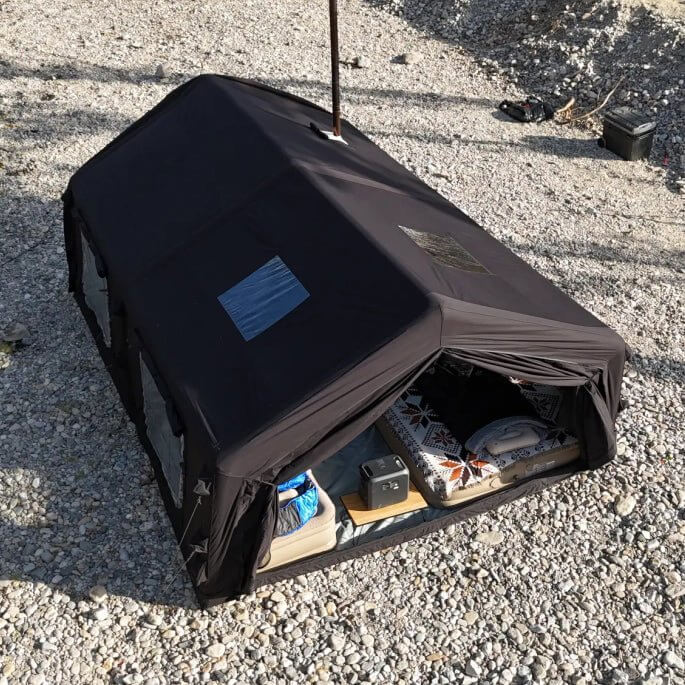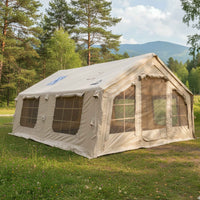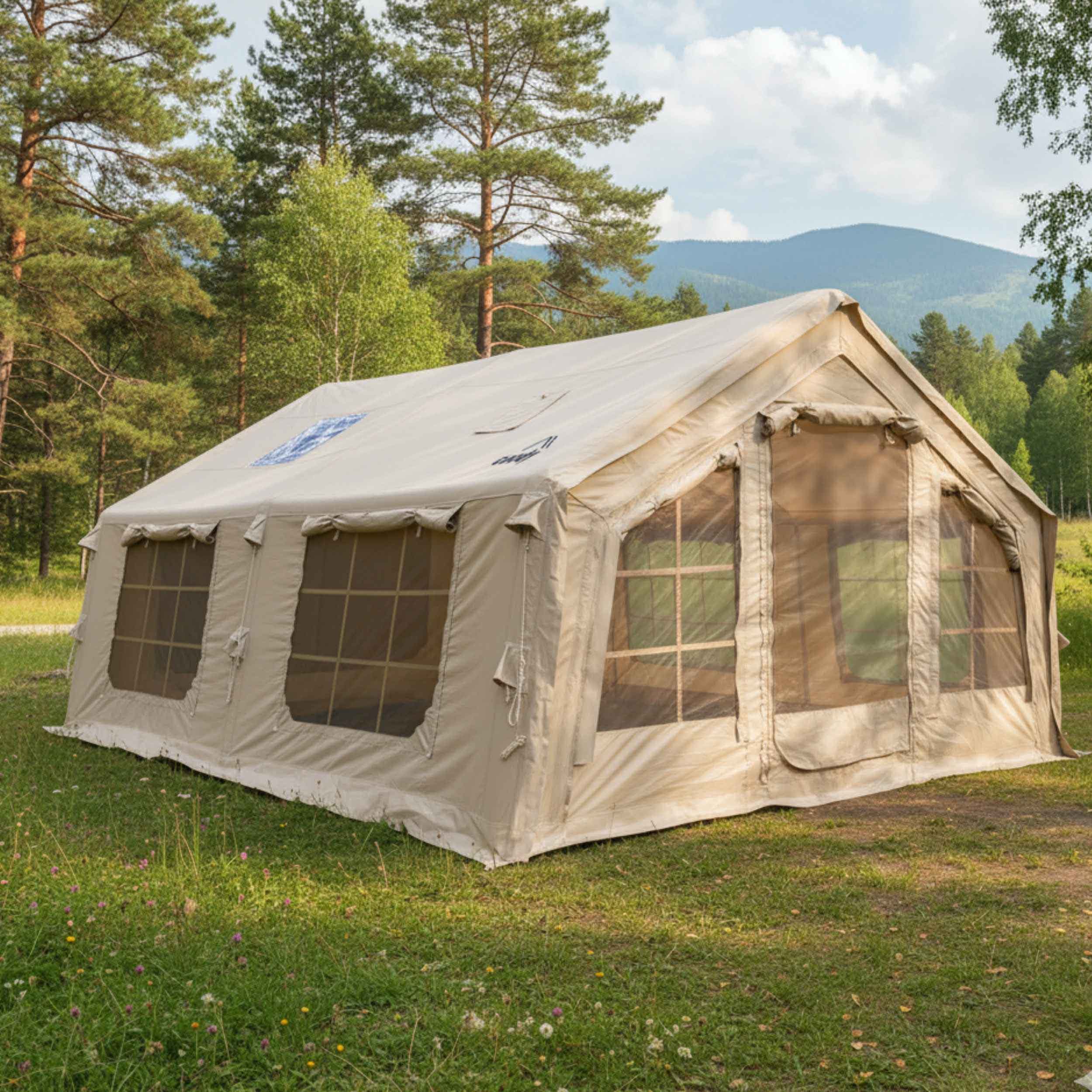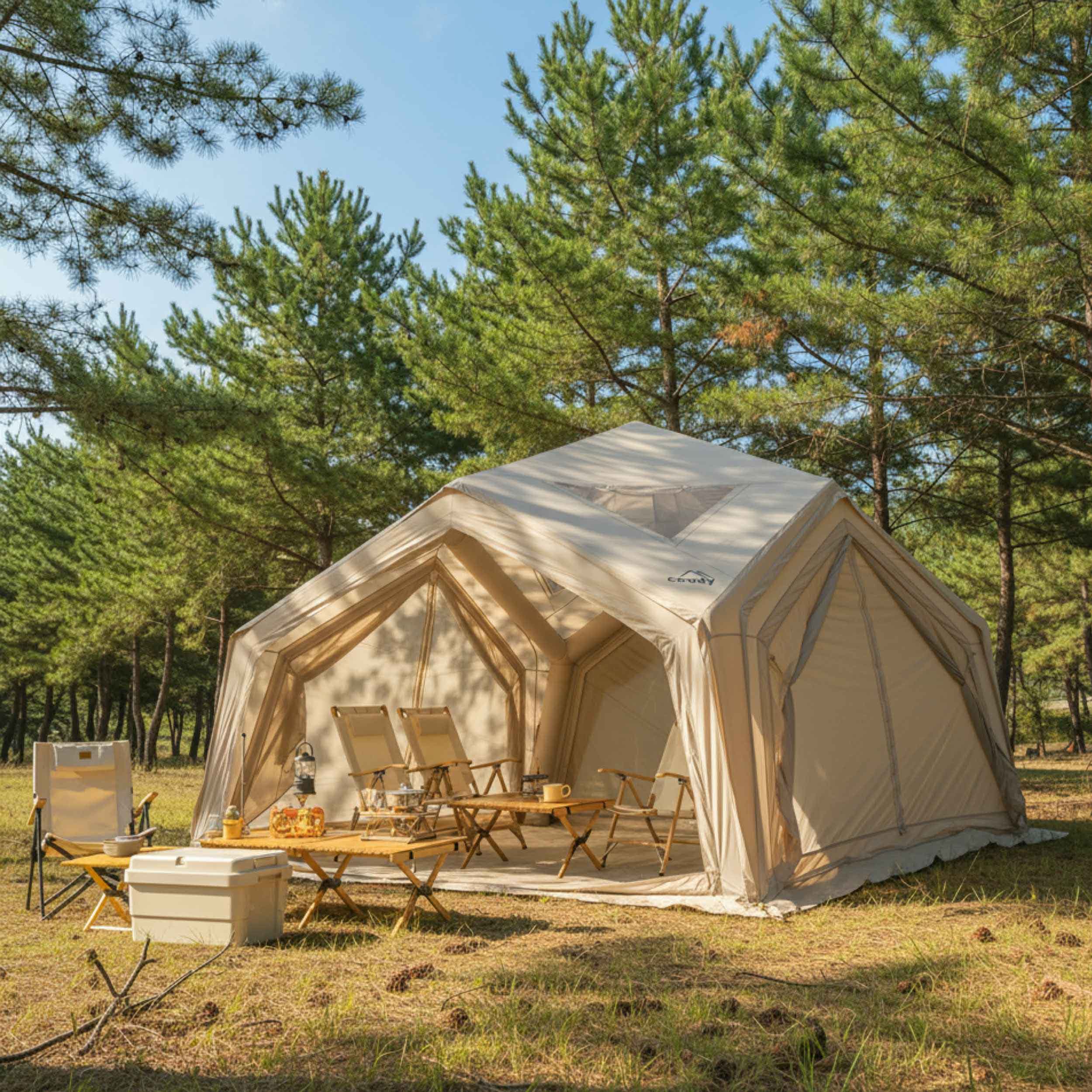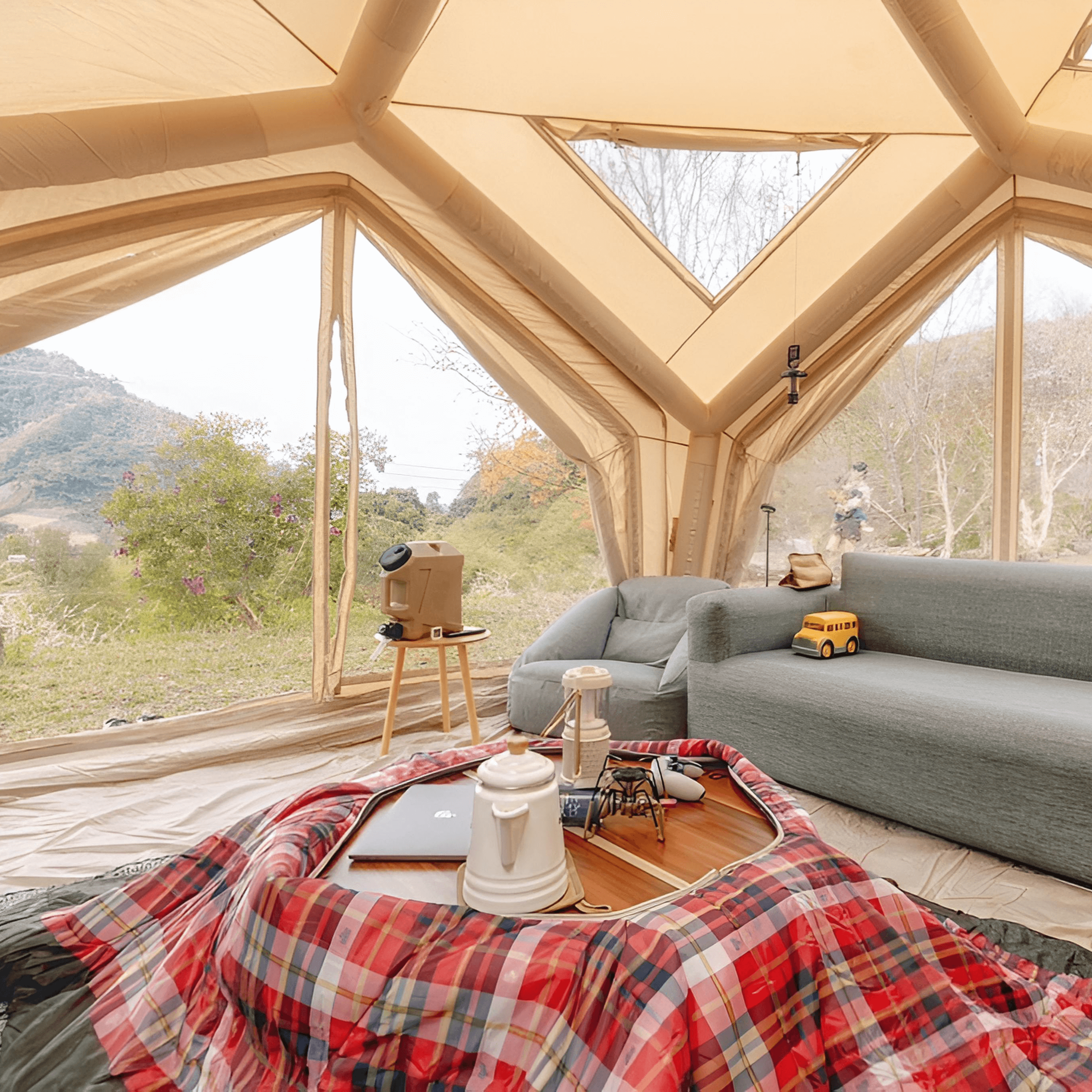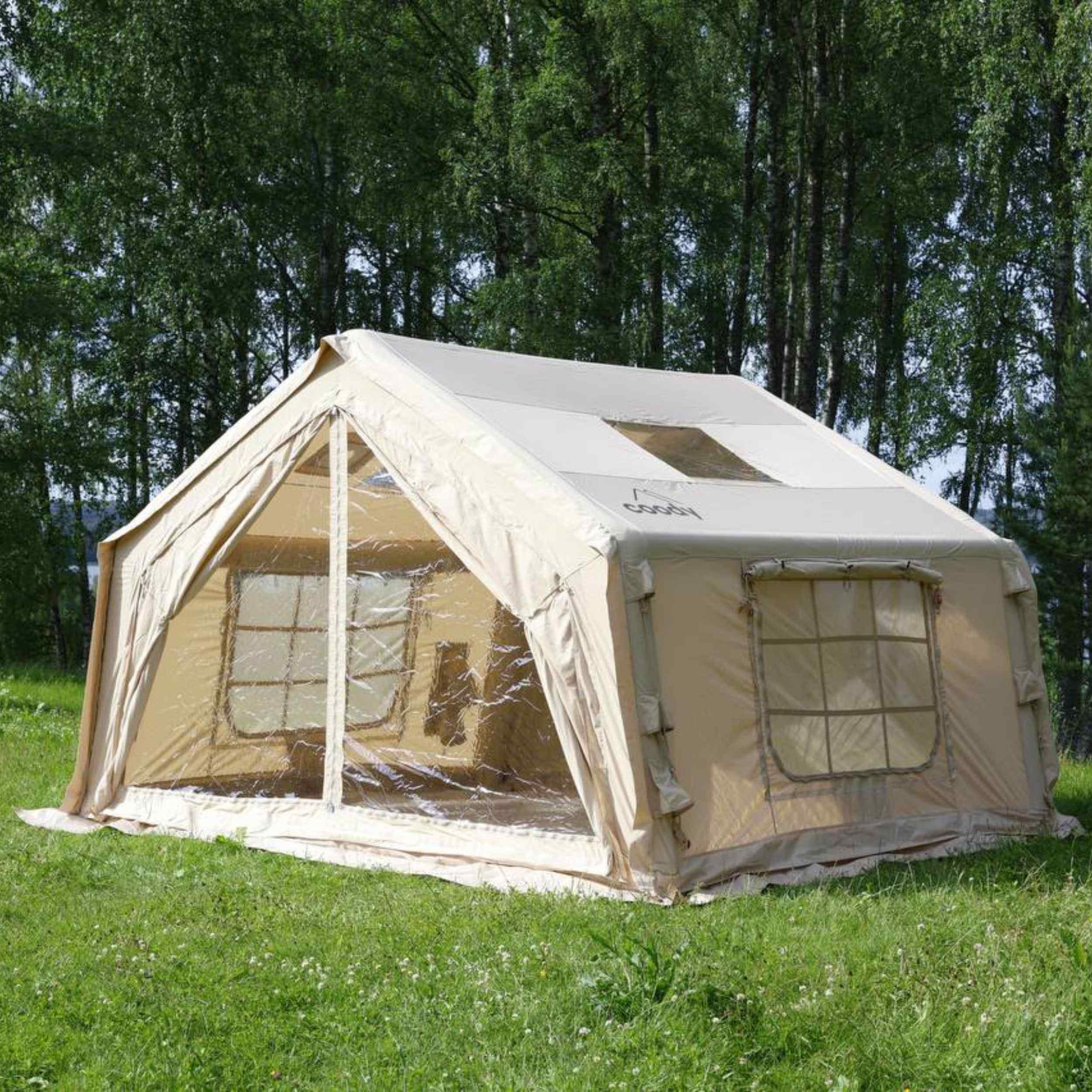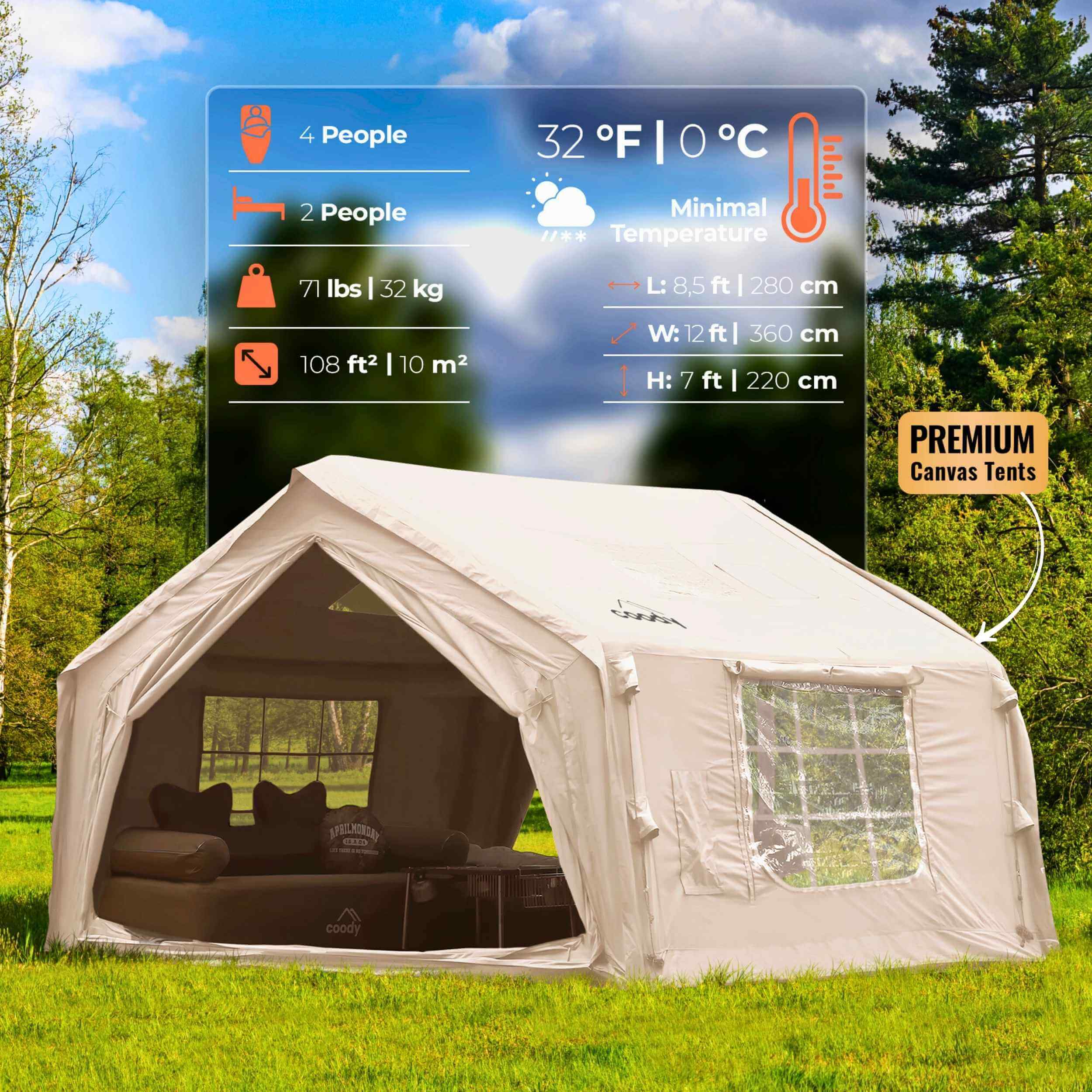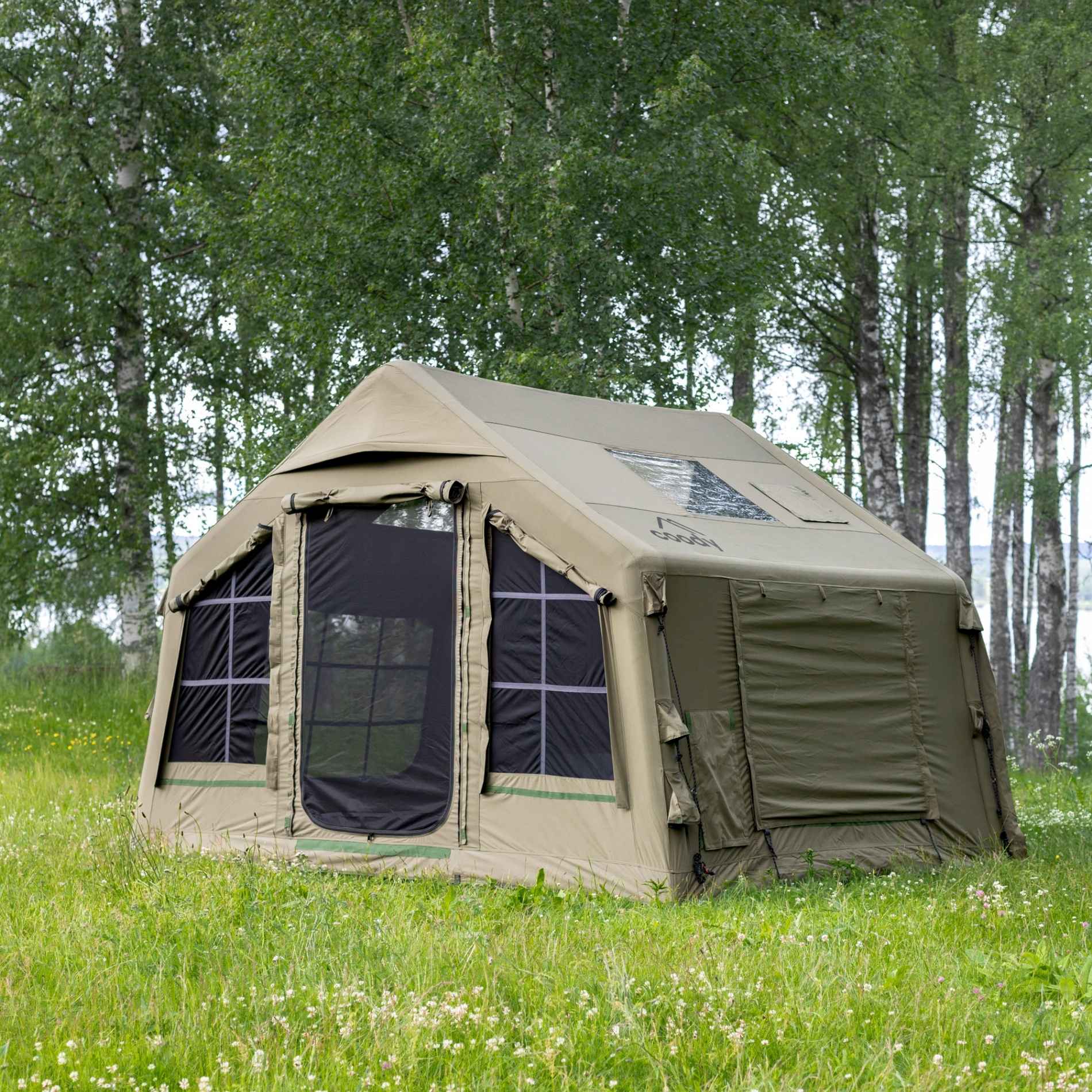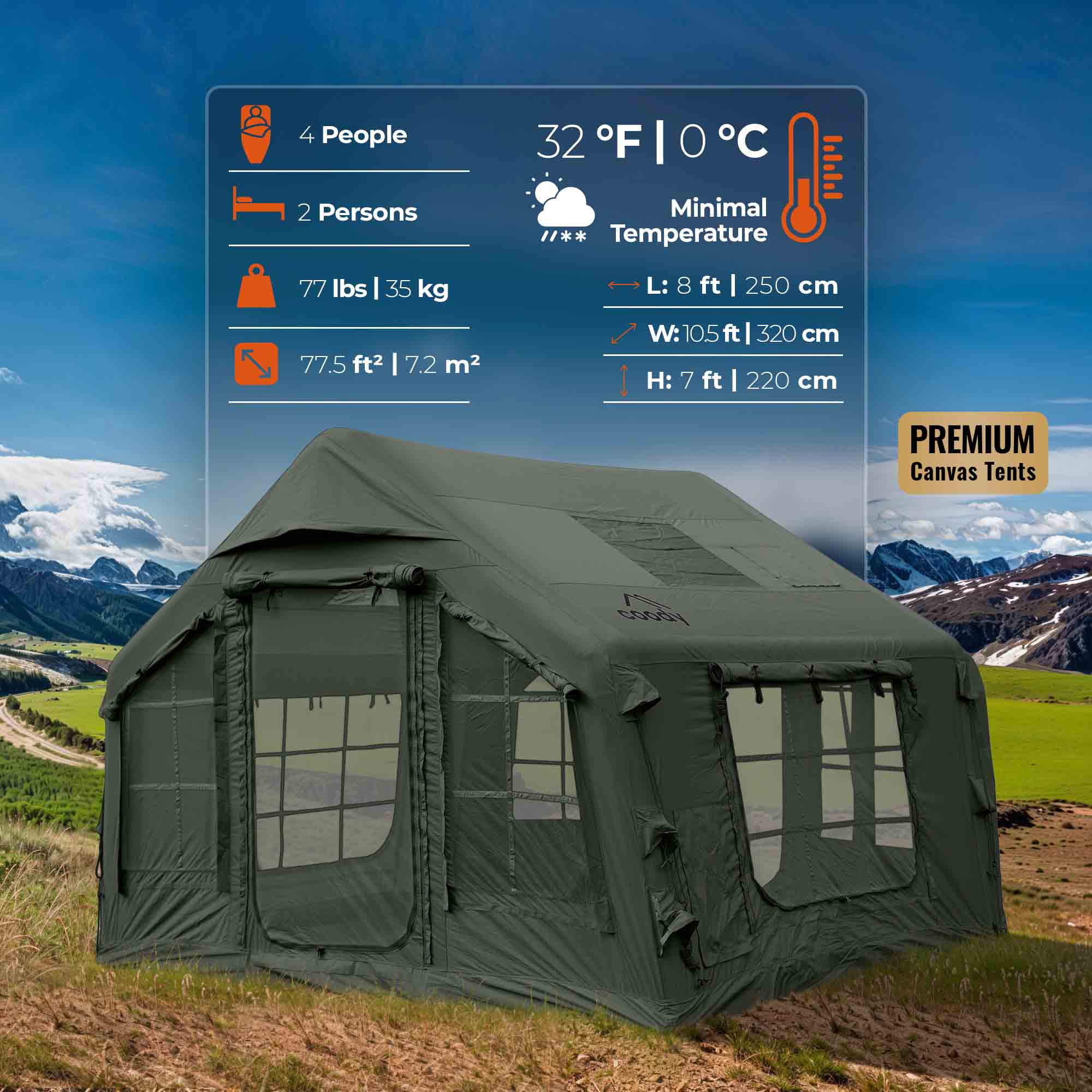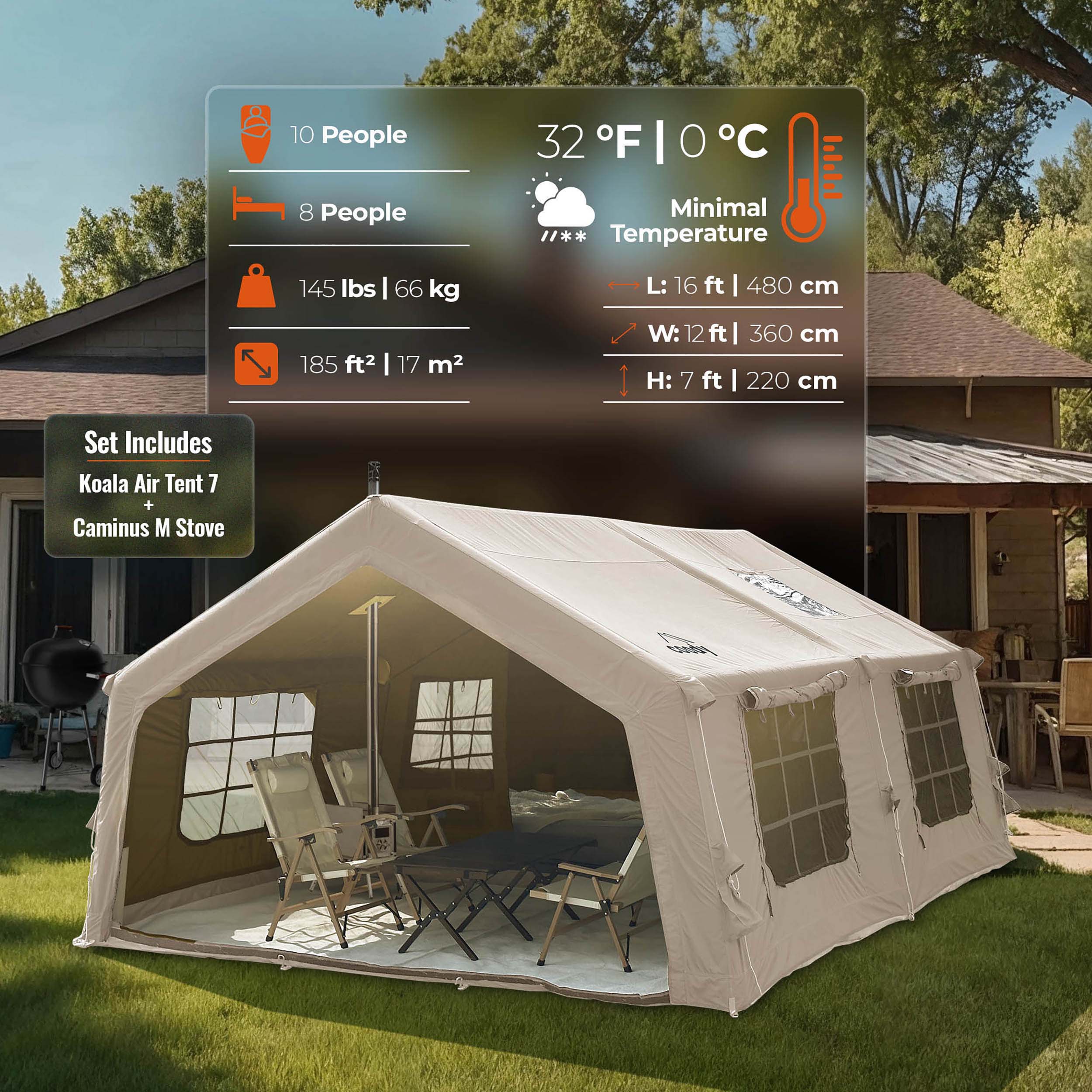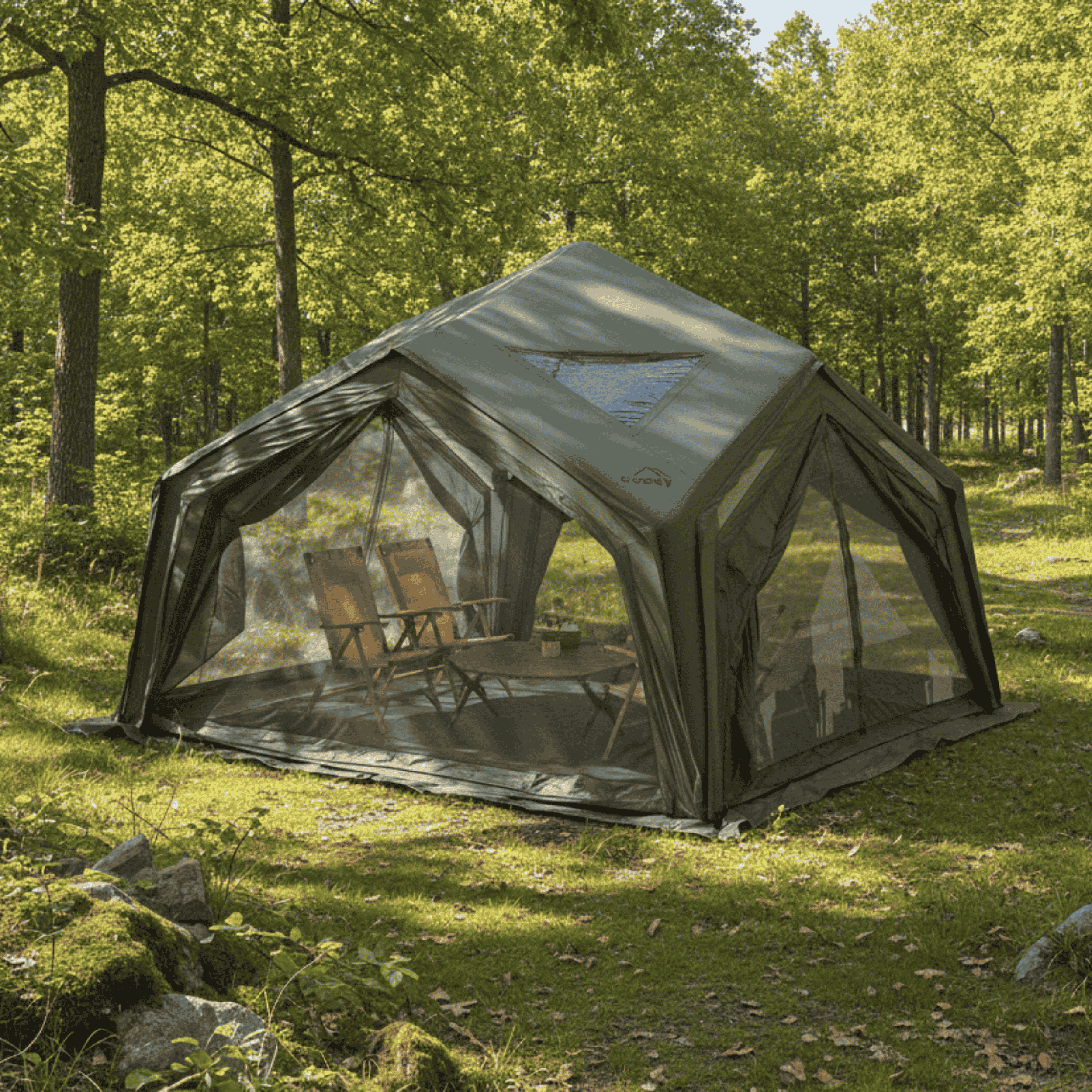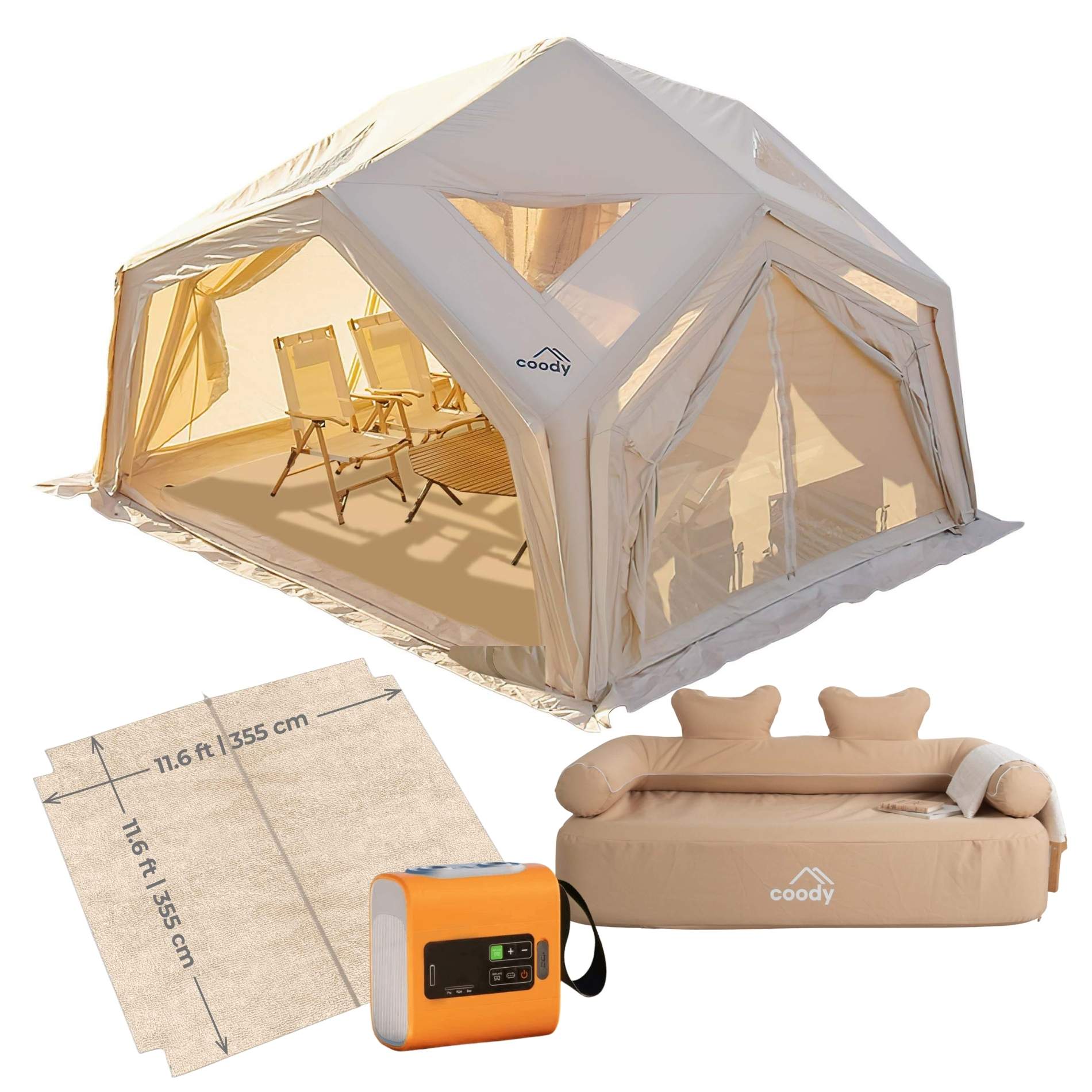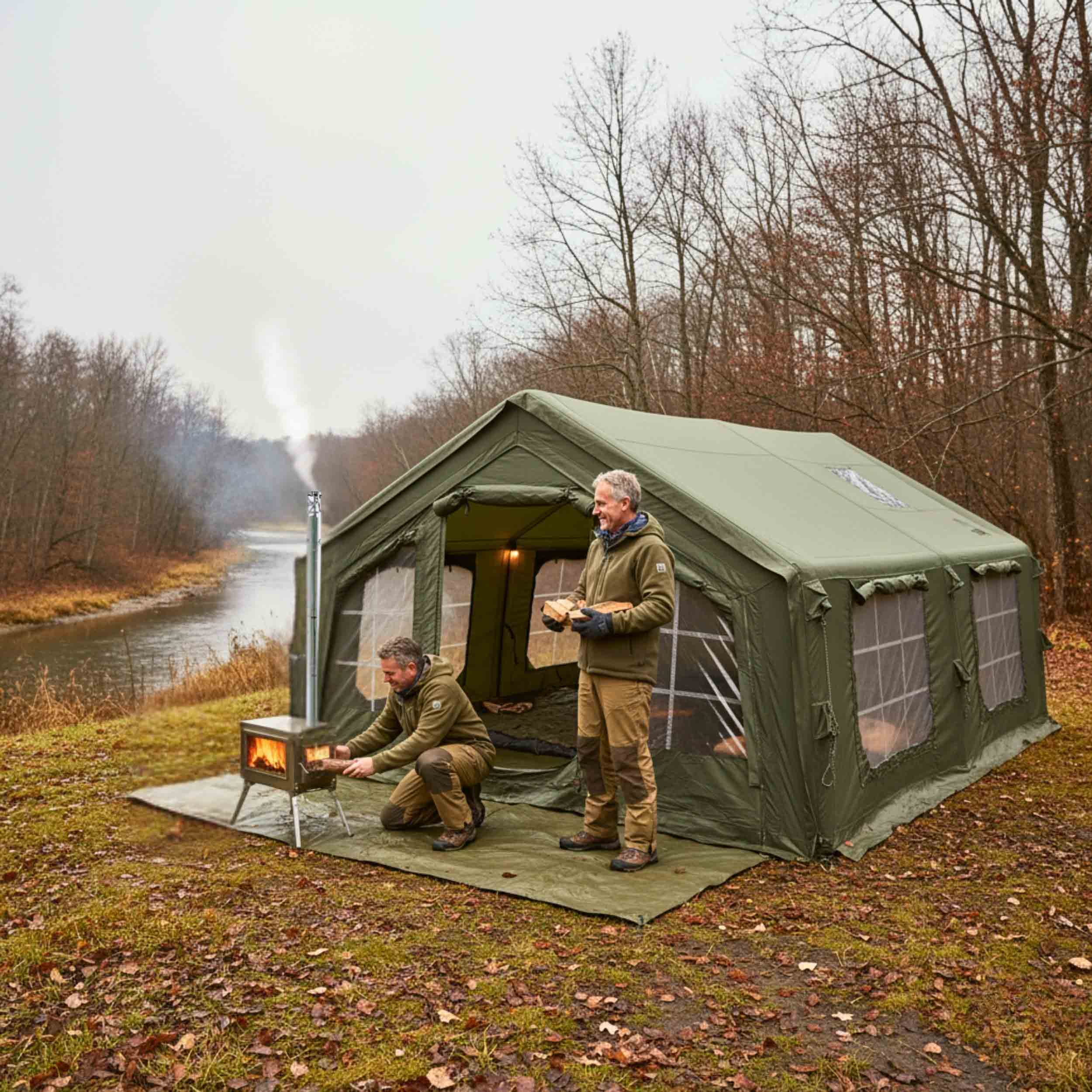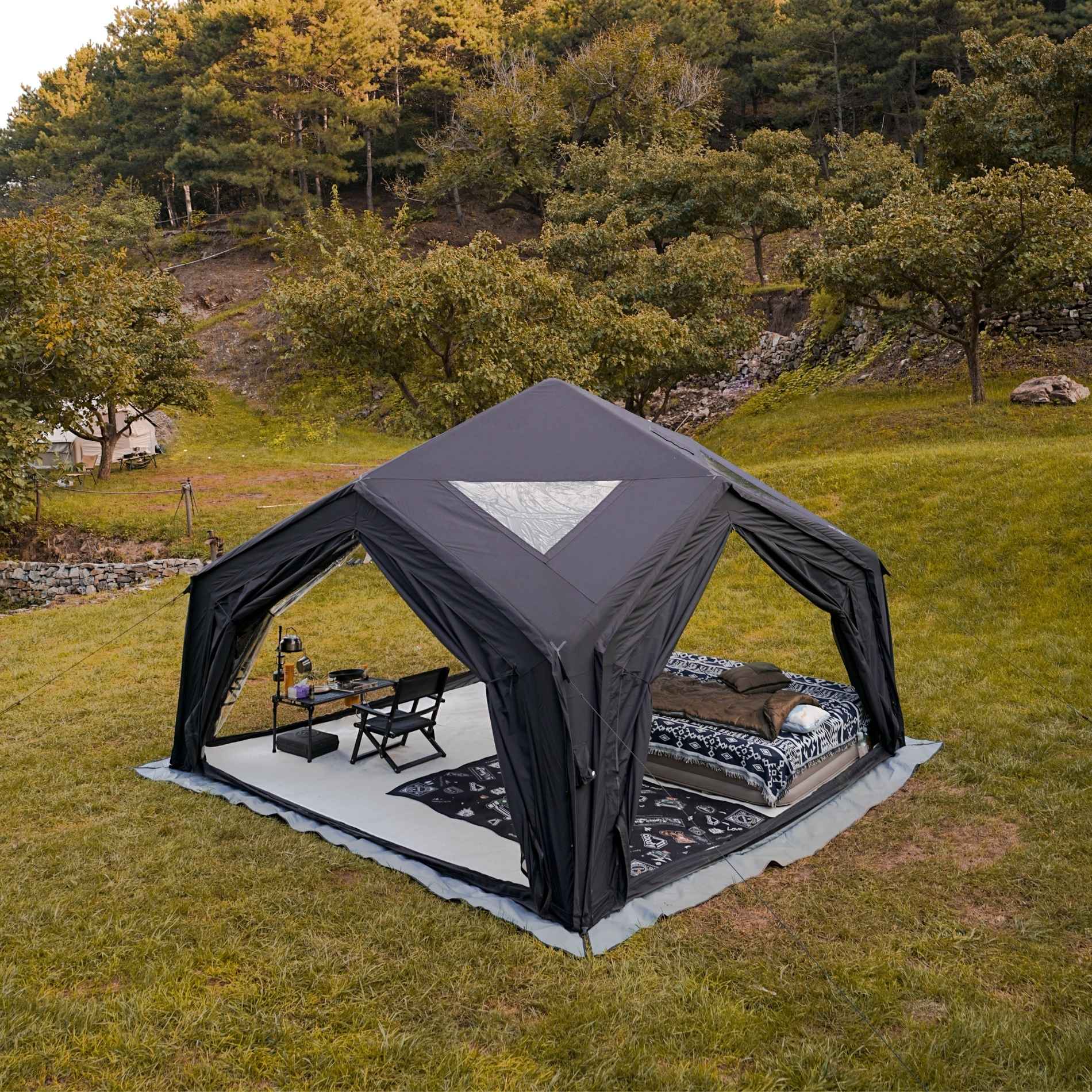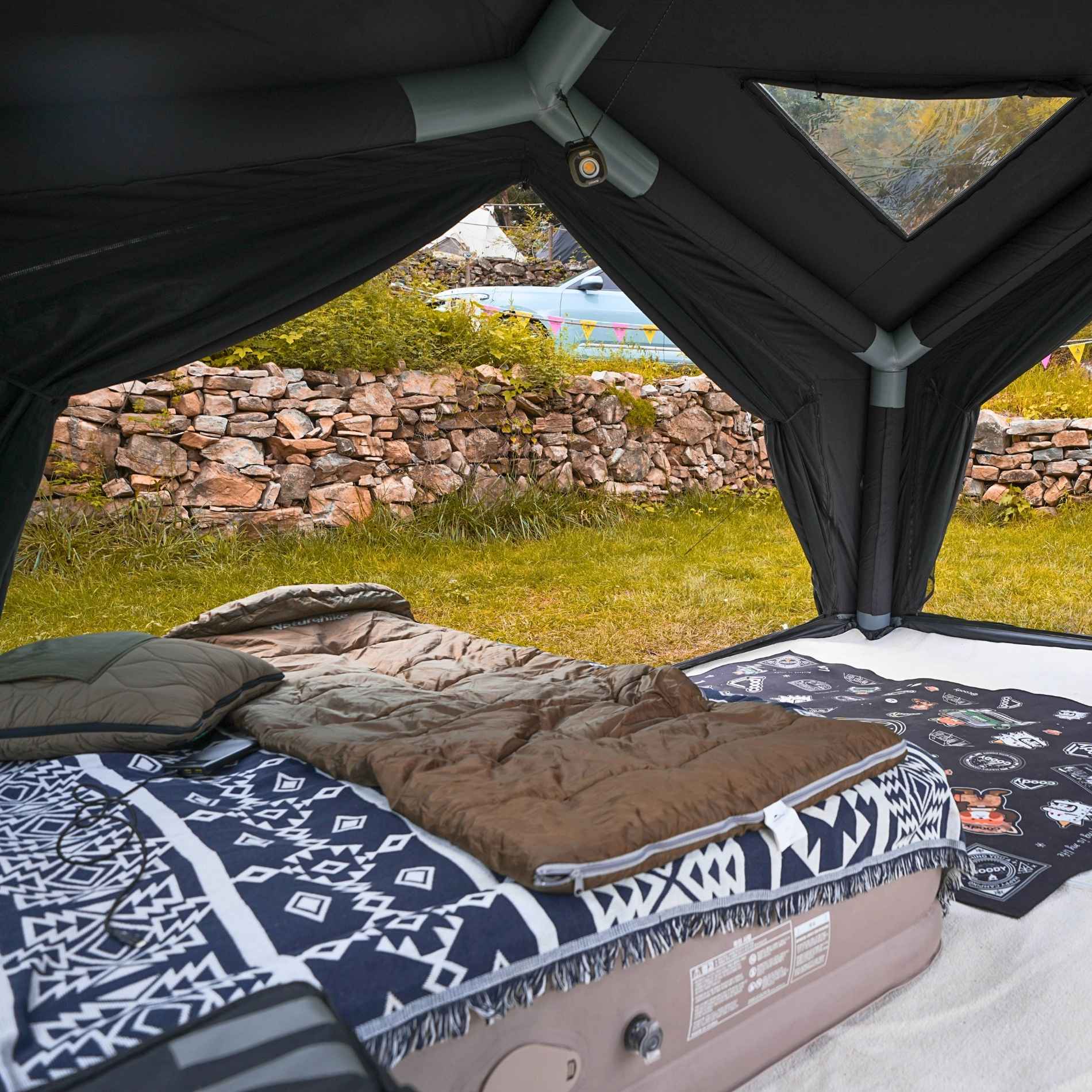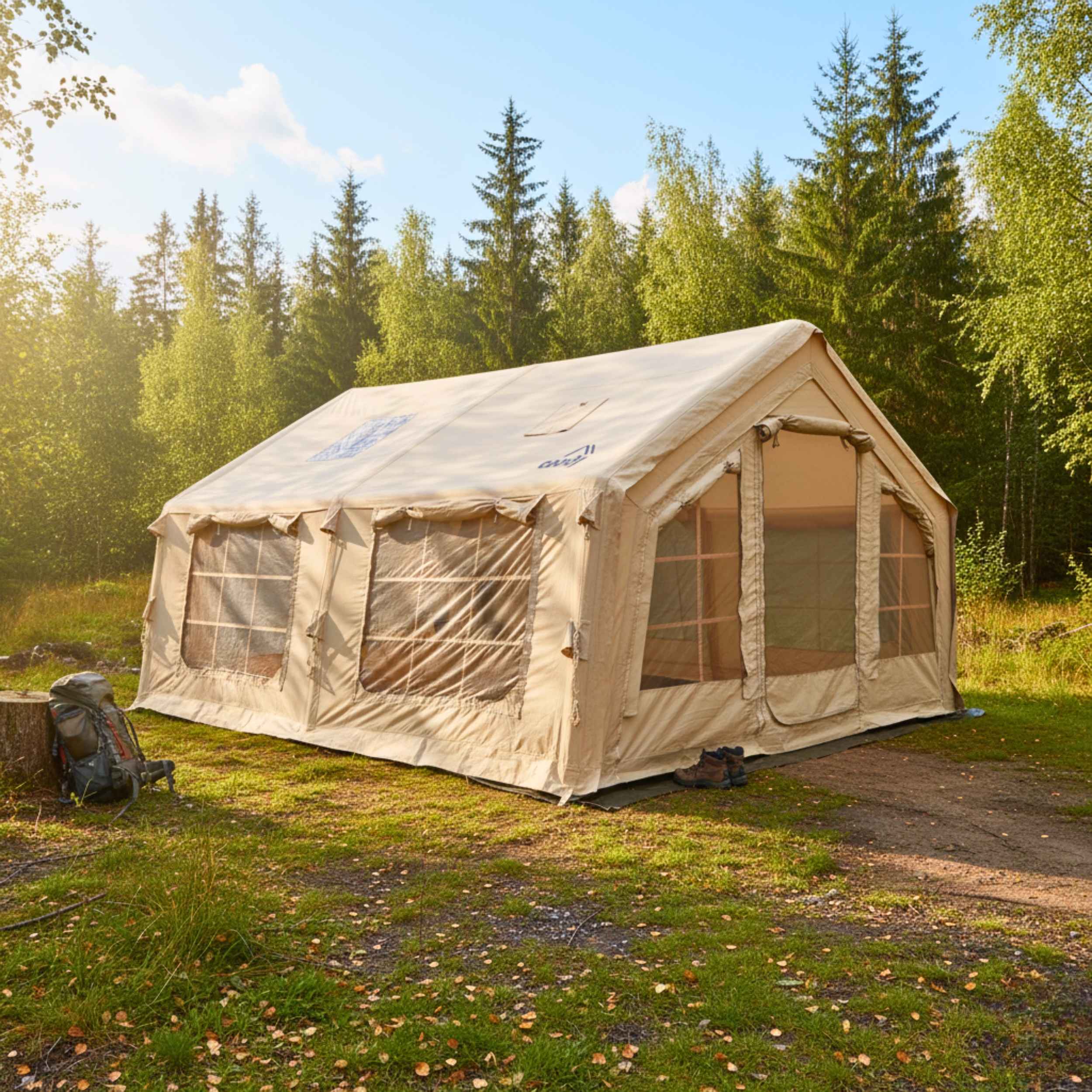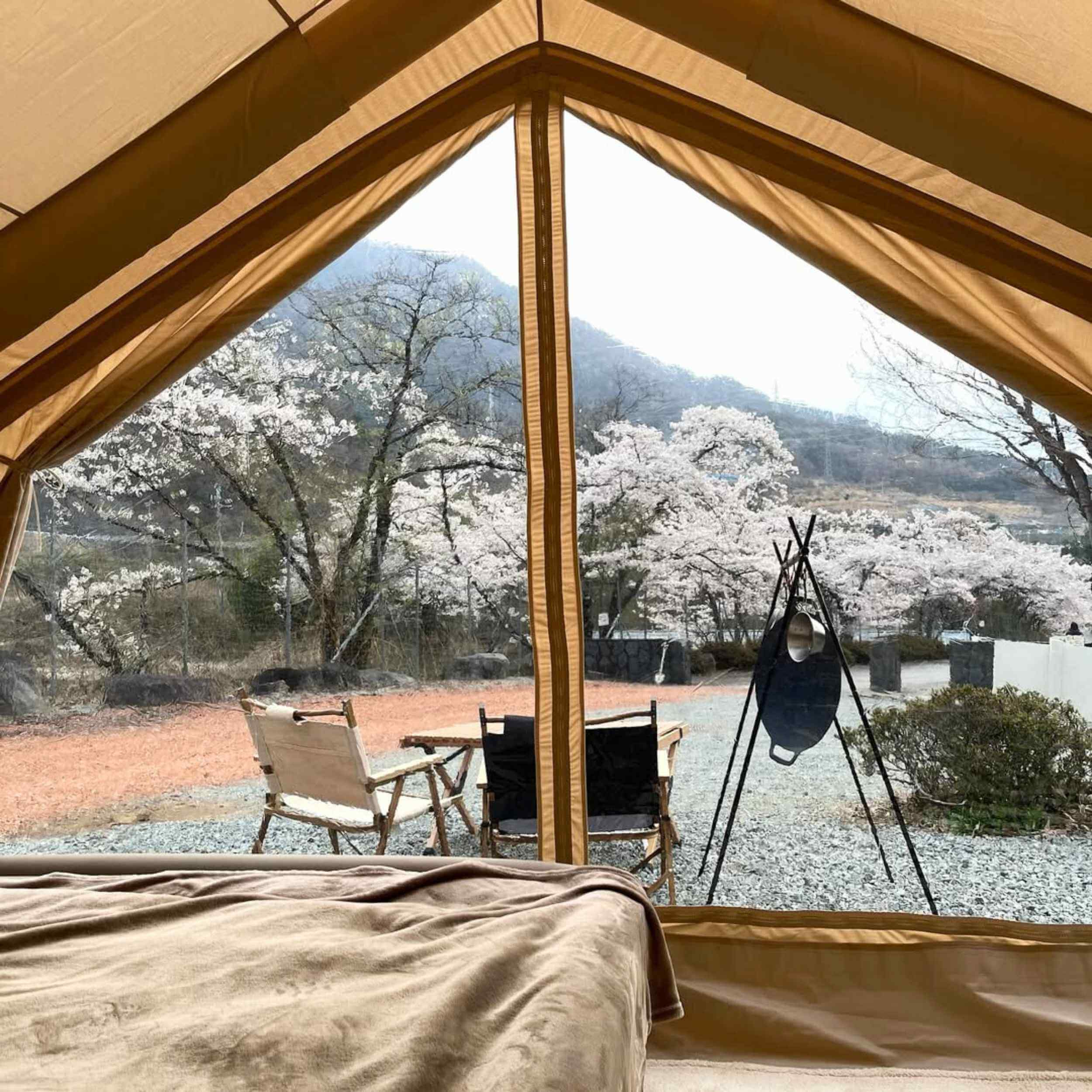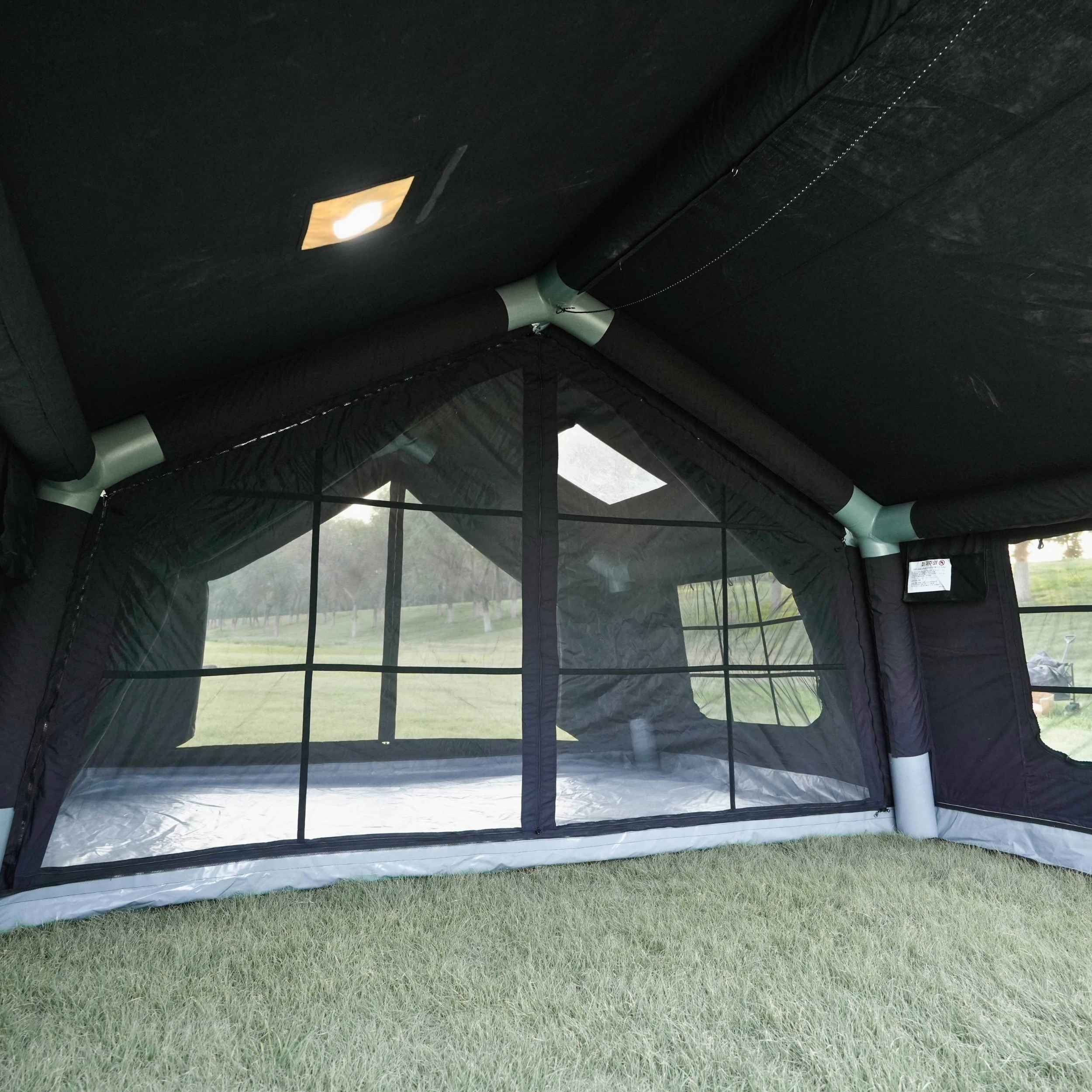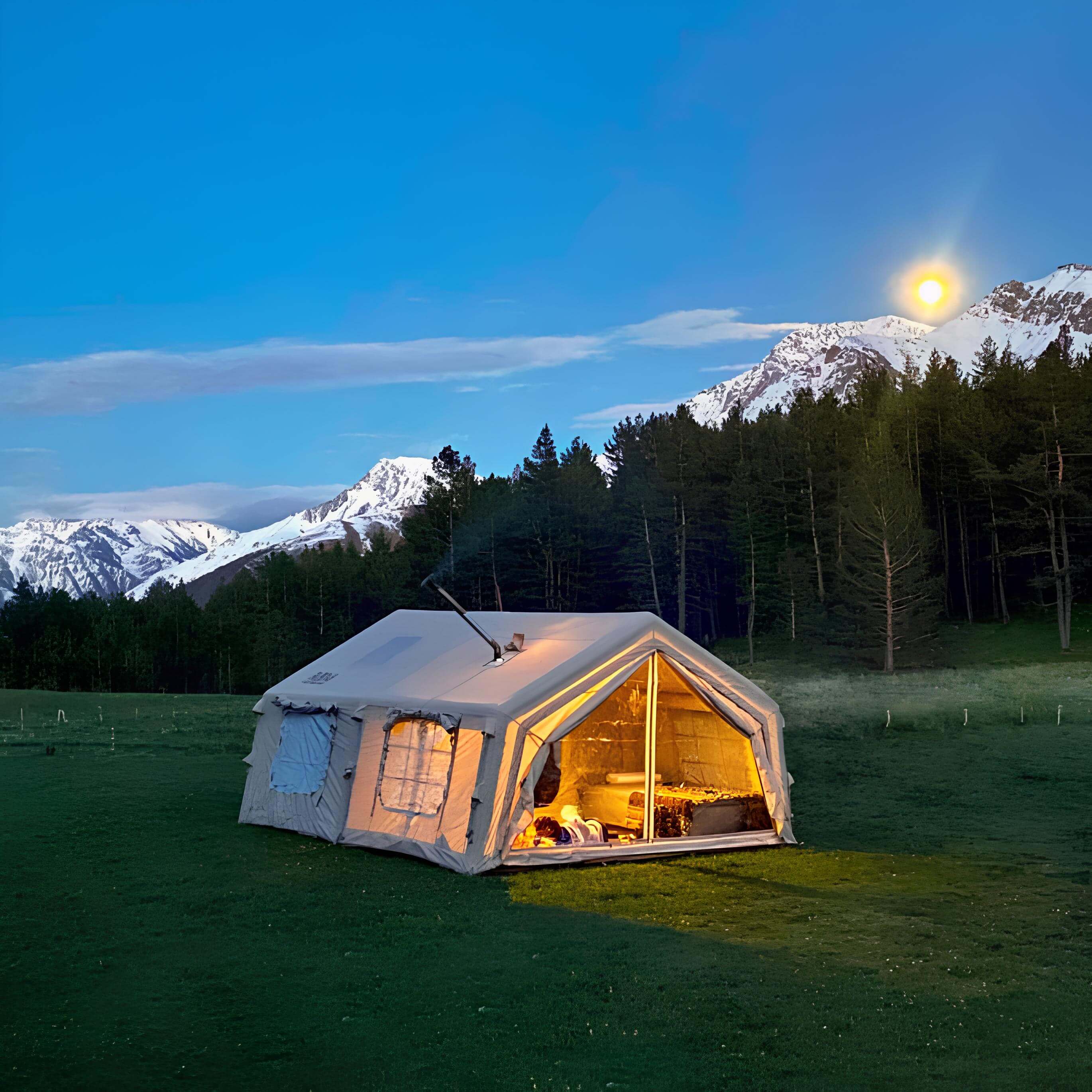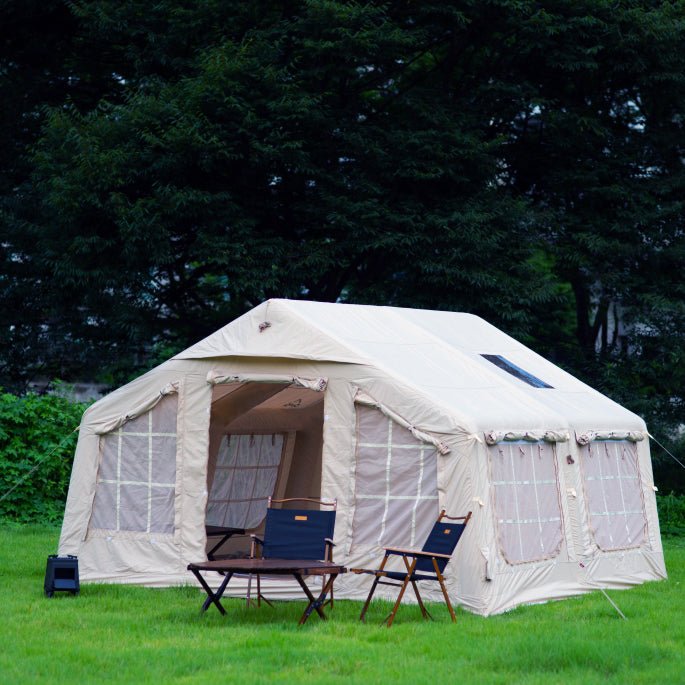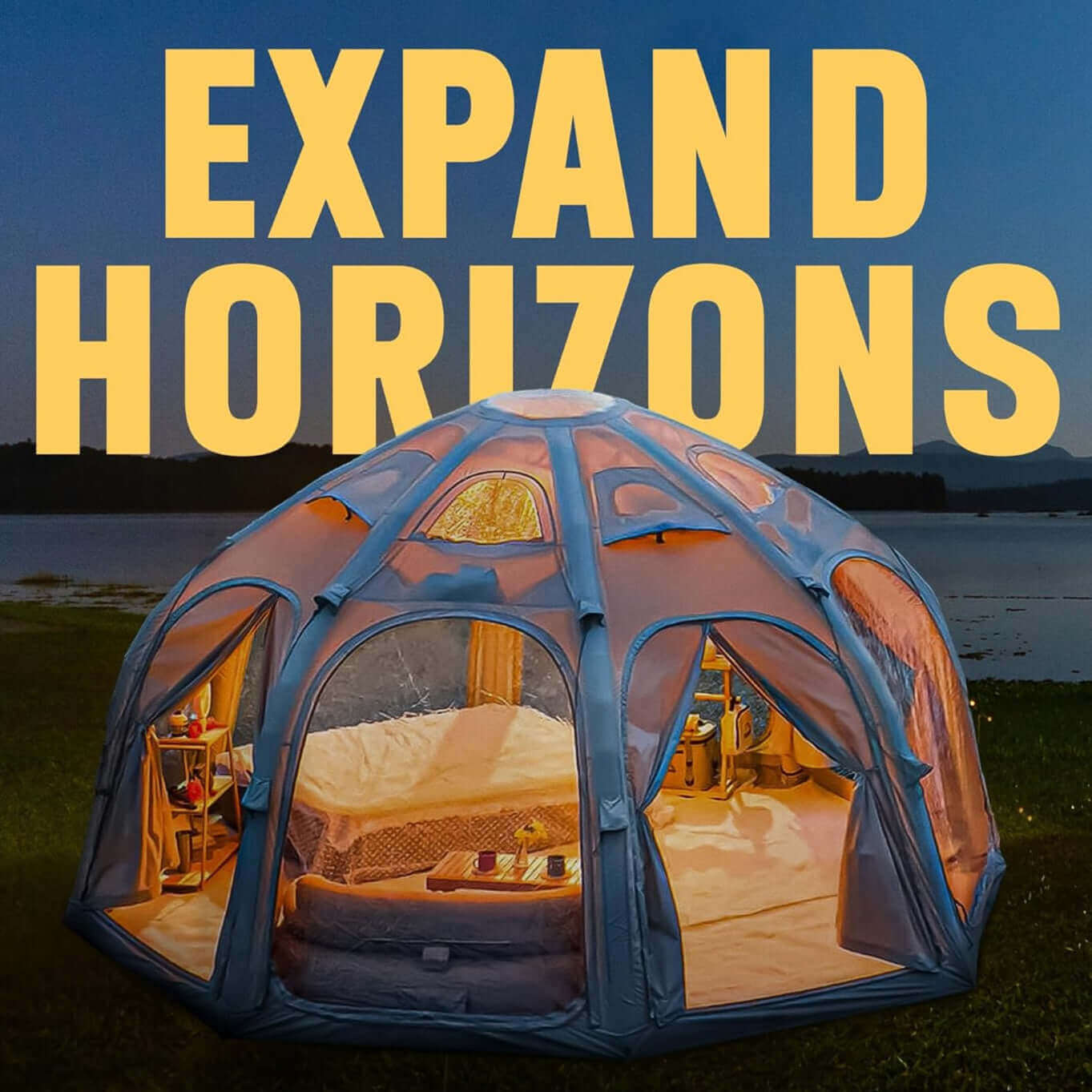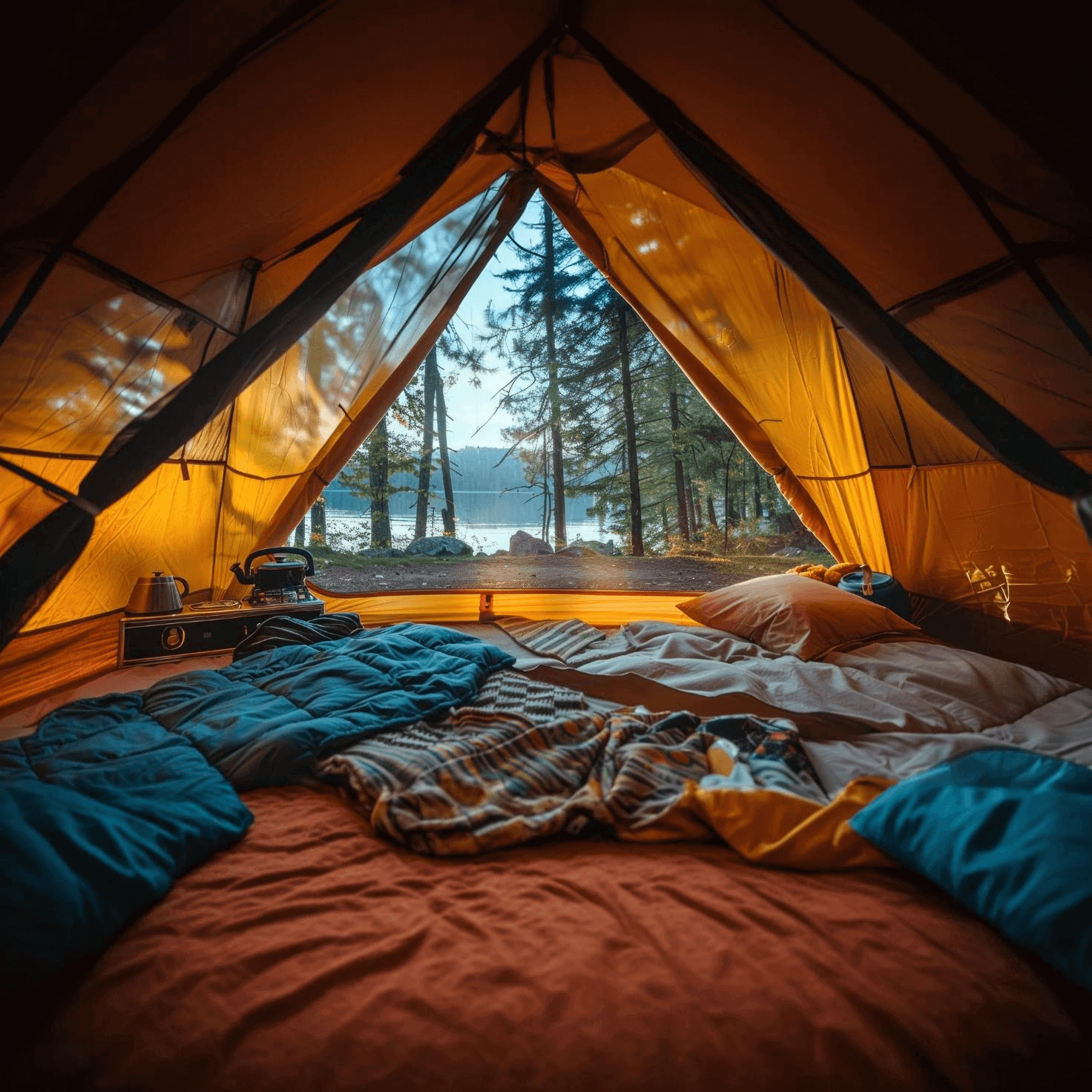


“$2,000? I could buy a car for that.”
If you’ve ever seen a Coody tent online, set up somewhere, or someone you know has shown you theirs, chances are you’ve either thought this—or heard someone else say it out loud. And honestly? That knee-jerk reaction does make sense. At first glance, $2,000 for a tent feels excessive; $2,000 for most things may seem excessive. But here’s the thing: a Coody tent isn’t just a tent. It’s a reliable outdoor shelter, a mobile cabin, and for many families, a replacement for an RV. The real value isn’t only in the canvas fabric or the marine-grade air beams—it’s in what the tent enables: freedom, comfort, and confidence in the wild. But I hear you say, “Any tent could do that!” Well, they certainly can’t all do that, and they certainly won’t be able to do it for 10, 15, or 20 years—or a whole lifetime—if you look after it.
Table of Contents
- What Makes Premium Tents Expensive (And Why It Matters)
- Materials That Actually Perform
- Designed for Real-World Conditions
- Built for Living, Not Just Sleeping
- “It’s Just a Tent” — Until It Becomes Your Second Home
- Why Cheap Tents Cost You More in the Long Run
- What You’re Really Paying For
- Payment Options Make It More Accessible
- Ask Yourself This
- Final Thought: Not for Everyone — And That’s Okay
What Makes Premium Tents Expensive (And Why It Matters)
Materials That Actually Perform



The first thing you’ll notice about a quality tent is the material. Coody tents are made from a Terylene/Cotton (TC) canvas. Unlike flimsy polyester or nylon, this fabric breathes. The cotton fibers swell when wet, naturally tightening the weave and making the tent waterproof without a thick, plasticky coating. This also prevents condensation. TC fabric is soft to the touch, dense, and built to last.
Instead of fragile metal poles, Coody uses marine-grade air beams. These aren’t balloons. They’re high-pressure, engineered structural systems. Made from 0.7 mm thick PVC, they’re 40% thicker than the PVC used in cheaper alternatives. This thickness makes them incredibly strong, and they remain flexible even in changing temperatures, unlike standard PVC. The tents also feature thick, durable floors and reinforced seams, ensuring you have a safe and reliable shelter no matter what the wilderness throws at you.
Designed for Real-World Conditions



Most so-called “3-season” tents struggle in heavy rain or wind. Coody tents are engineered to handle unpredictable weather—from summer storms to chilly autumn nights. With proper setup and the right gear, they perform well even in colder temperatures (down to around 15°F / -10°C).
The airframe design replaces traditional fiberglass poles with durable, pressurized beams, making the structure stable in high winds and quick to set up—even our largest models take just minutes.
This isn’t just about enduring bad weather — it’s about staying comfortable in it.
Built for Living, Not Just Sleeping


Our products: Coody 10.0 and Coody Aurora Dome
Step inside a Coody, and you’ll quickly realize it’s not your average tent. With standing height, panoramic windows, and optional wall panels, it feels more like a cozy cabin than a temporary shelter. The airflow system in the tents is designed not only to ensure you can regulate ventilation according to the conditions but also to help minimize condensation. The clear plastic doors let you feel as if you’re part of nature, and the skylights in the ceiling turn stargazing into a nightly ritual.
This is outdoor living, not just overnight camping.
“It’s Just a Tent” — Until It Becomes Your Second Home


Many people compare a tent to an RV or rental cabin—but Coody offers something those can’t: portability without compromise. An RV costs $40K+, guzzles gas, and limits where you can go; many parks don’t allow RVs, and the more remote you want your camping spot to be, the less likely an RV will get you there. Rental cabins are fixed in location and often booked months in advance; buying one can easily cost hundreds of thousands of dollars, not to mention the constant costs of ownership. A cheap tent might get you through a summer weekend—but not a windy September or rainy spring.
“We sold the RV and got a Coody. Now we go anywhere, anytime, for however long we want.”
— Jerry, retired camper and full-time adventurer
For families, couples, and solo explorers alike, a Coody becomes a trusted second home—one you can set up beside a mountain lake, in a desert canyon, or deep in the woods (some of our clients have them in the backyard almost year-round). It’s not just shelter; it’s a place to gather, cook, read, and reconnect.
Why Cheap Tents Cost You More in the Long Run
It’s easy to justify a $150 tent—until you tally the hidden costs:
- Broken poles after two windy nights
- Poor waterproofing that soaks your sleeping bags and electronics
- Cold, sleepless nights that cut trips short
- Condensation that leaves everything soaked through
- The need for replacement every 1–2 years due to UV degradation or seam failure
- Zero resale value—nobody wants a used budget tent
Do the math:
$350 × 3 tents over 6 years + ruined gear + canceled trips = well over $2,000.
Meanwhile, a Coody can easily last 10+ years, holds its value, and actually enhances your experience.
What You’re Really Paying For



Coody tents aren’t just sewn—they’re engineered. Every seam is reinforced, every fabric batch tested for fire and mildew resistance, and every air beam pressure-rated for safety. They undergo real-world trials in coastal storms and desert heat. This level of quality control is why they carry robust warranties and loyal followings.
When your shelter is reliable, everything else improves. You sleep deeper, cook with ease, and relax fully—because you know your tent won’t leak, collapse, or fail you. This isn’t “good enough” camping; it’s enjoyable, repeatable, memorable outdoor living.
Think of a Coody not as a purchase, but as an investment in freedom. For $2,000, you’re buying:
- 10+ years of family adventures
- A comfortable basecamp for unpredictable weather
- A backup emergency shelter
- A mobile cabin that goes where you want it to
You’re not paying for a tent. You’re paying for peace of mind, uninterrupted trips, and the ability to say “yes” to spontaneous adventures—rain or shine.
Payment Options Make It More Accessible
Worried about the upfront cost? You’re not alone—and Coody makes it manageable:
- Use Shop Pay to split your payment into four interest-free installments (or more depending on your plan).
- Watch for seasonal sales—many premium brands offer discounts around Memorial Day, Black Friday, or spring launch events.
- Reframe your outdoor budget: skip one hotel stay or RV rental, and redirect the money you’ve saved toward gear that lasts decades.
The Coody sits in a sweet spot: luxury tent camping meets practicality without the debt or limitations of larger setups.
Ask Yourself This
Do you want to sleep somewhere—or live somewhere?
Would you rather replace gear every two years or build a system that lasts a decade?
What kind of experience do you want to create for your kids, partner, or yourself?
If your answer leans toward comfort, reliability, and long-term capability, then $2,000 isn’t too much—it’s just right.
Final Thought: Not for Everyone — And That’s Okay
Some campers need a $50 backyard tent for occasional summer nights. And that’s perfectly fine. But if you’re seeking a durable camping shelter that supports family trips and true outdoor living, then a Coody isn’t an expense—it’s an upgrade that pays dividends in joy, safety, and unforgettable moments.
For those who live for the escape, for the freedom, for the great outdoors, and to create a lifetime of happy memories, it’s worth every last penny.

